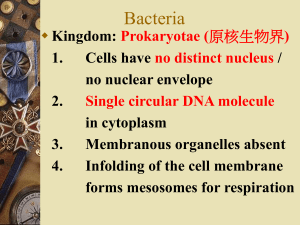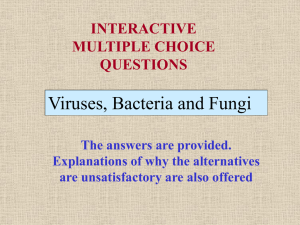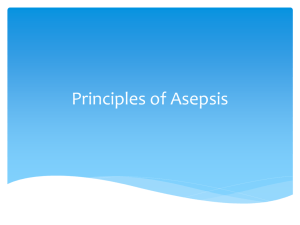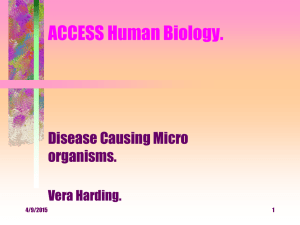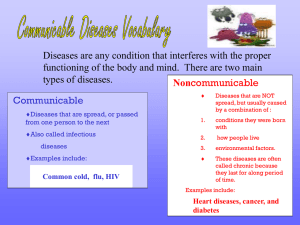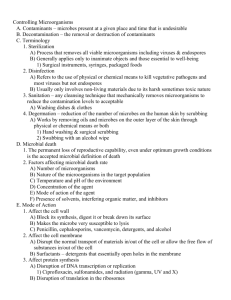lec3
advertisement
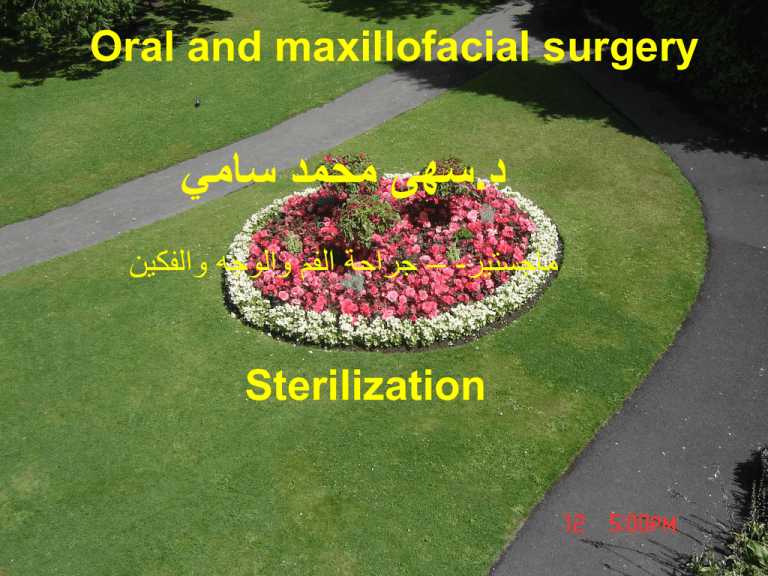
Oral and maxillofacial surgery د.سهى محمد سامي ماجستير – -جراحة الفم والوجه والفكين Sterilization Sterilization: Process destroys all forms of microbial life , including bacteria ,viruses , spores , fungi . Disinfection : Process intended to kill or remove pathogenic microorganism except bacterial spores . Method of sterilization: 1. Autoclave . 2. Hot air oven ( dry heat ) . 3.Ethylene oxide . 4. Low – temperature steam and formaldehyde . 5. Irradiation . 6. Sporicidal chemicals . 1. Autoclaves :saturated steam at high pressure , kills all the micro organisms including T B, viruses. heat- resistant spores. Holding times depend on Temperature and pressure 134 C0 at 32 lb\in2 for 3min. Wrapped instruments porous load autoclave in corporate aprevaccum cycle of extraction steam penetration monitored with Bowie Dick lest. 2.Dry heat :Sterilization by hot-air oven. Effective but inefficient compared to autoclave. 160 C0 for 2 hours or 180 for 30 min. For moisture – sensitive instruments (no corrosion) non-stainless metals. surgical instruments with fine cutting edges as ophthalmic instruments process, air tight containers and non-aqueous fluids and ointments sterilization of hand pieces must be preceded by careful cleaning and lubrication with special heat resistant oils . 3. Ethylene Oxide :Highly penetrative gas. Kills vegetative bacteria , viruses and . spores Effective at ambient temperatures and pressures . Effective as a liquid or gas. Efficient for heat and moisture sensitive equipment . E.X. rubber, plastics , Electrical equipment , lenses , used for sutures and single use items . 4.Low – temperature steam and formaldehyde. 1. Physio- chemical method . 2. Kills vegetative bacteria , viruses , and spores at 73 Co . 3. Suitable for heat – sensitive items 4. Not suitable for sealed , oily items or those with retained air . 5. Irradiation . 1. Use of gamma rays or accelerated electrons . 2. An industrial process . 3. Large batches of single use items , catheter , syringes , canulas . 6. Sporicidal chemicals . 1. per acetic acid (steris ) . 2. The system involves liquid immersion . 3. Not inactivated by the presence of organic matter . 4. Kills vegetative bacteria , viruses , and spores . 5. Suitable for flexible endoscopes . Anti septic used for skin preparation are : 1. Alcohol . 2.Chlorhexidin . 3.Iodin and iodophors. 1. Alcohol . 1. Broadest spectrum at 70 % concentration 2. Rapidly effective against ( gram positive and gram negative bacteria . 3. Some virucidal and fungicidal activity . 4. Relatively inactive against spores and fungi . 5. Mode of action by denature protein . 2. Chlorhexidine ( quaternary ammonium compound ) . 1. Good activity against staph aureus and other gram positive bacteria. 2. Moderate activity against gram negative bacteria. 3. some activity against pseudomonas aerogenosa . 4. non_ toxic to skin and mucus membranes. 5.Poor activity against spores , fungi ,viruses . 6. In activated by pus ,soap. 7. It has along duration of action ( up to 6 h ). 8. Mode of action , causes bacterial cell wall disruption . 3. Iodine( povidone iodine) : 1. Broad spectrum of activity against bacteria , spores , fungi , viruses . 2. Easily in activated by blood , feces , pus . 3. Need optimum freshness , concentration and pH more than 4 ( acidic ). 4. Stain the skin , irritant , may cause local hypersensitivity. 5. Mode of action by oxidation / substitution of free iodine .
